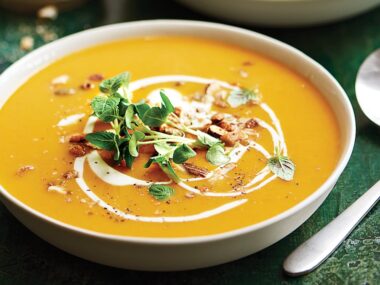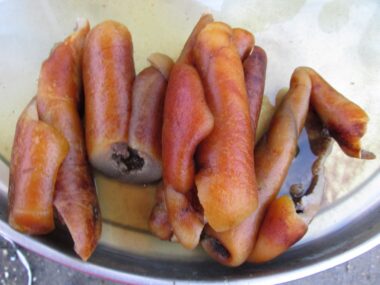Barbecue is a diverse and flavorful culinary tradition enjoyed by people around the world. Whether it’s slow-cooked, smoked, or grilled, barbecue is a versatile cooking method that continues to evolve and adapt to regional tastes and preferences. It’s also a celebration of food, community, and culture in many parts of the world.
Barbecue, often abbreviated as BBQ, is a popular cooking style with different regional variations around the world. Making barbecue typically involves marinating or seasoning meat, then slow-cooking it over an open flame or in a smoker.

Types of Barbecue
- American Barbecue: The United States is known for its diverse regional barbecue styles, including:
- Texas BBQ: Known for beef brisket, smoked sausages, and a focus on rubs and sauces.
- Kansas City BBQ: Known for a variety of meats, sweet and tangy tomato-based sauces, and a combination of grilling and smoking.
- Carolina BBQ: Known for pulled pork, often served with a vinegar-based sauce in the east and a mustard-based sauce in the south.
- Memphis BBQ: Known for pork ribs, dry rubs, and a smoky flavor.
- Alabama BBQ: Known for a white sauce made from mayonnaise, vinegar, and other ingredients, often used with chicken.
- International Barbecue: Barbecue techniques and flavors vary widely around the world:
- Brazilian Churrasco: Famous for skewered and grilled meats, often seasoned with simple rubs and served with chimichurri sauce.
- Argentinian Asado: Features slow-grilled meats over an open flame, often seasoned only with salt.
- Korean BBQ: Involves grilling thinly sliced marinated meats, usually served with various side dishes and sauces.
- Indian Tandoori: Utilizes a tandoor (clay oven) to cook marinated meats, resulting in a smoky, charred flavor.
Barbecue Cuisine
- Barbecue cuisine typically includes a variety of meats, such as beef, pork, chicken, and sometimes seafood, that are seasoned, smoked, or grilled to achieve a unique flavor profile.
- Sauces and rubs are an essential element of barbecue, with flavors ranging from sweet and tangy to spicy and smoky.
- Common barbecue side dishes include coleslaw, baked beans, cornbread, potato salad, macaroni and cheese, and pickles.
Barbecue Events and Culture
- Barbecue often brings people together for social gatherings and events, such as cookouts, picnics, tailgating parties, and competitive barbecue contests.
- These events are not only about the food but also about the culture and camaraderie surrounding barbecue.
Ingredients
- Meat of your choice (common options include pork ribs, beef brisket, chicken, or pork shoulder)
- Barbecue rub or seasoning (store-bought or homemade)
- Barbecue sauce (store-bought or homemade)
- Wood chips or chunks for smoking (optional)
- Marinade or brine (optional, for additional flavor and tenderness)
Equipment
- Grill or smoker (charcoal, wood, gas, or electric)
- Thermometer (for monitoring meat temperature)
- Basting brush (for applying sauce)
- Aluminum foil (for wrapping and resting meat)
Instructions
Prep the Meat
- Choose your meat and trim excess fat if desired. If you like, you can marinate or brine the meat for a few hours or overnight for added flavor and tenderness. This step is optional but can enhance the final result.
Season with Rub
- Generously season the meat with your chosen barbecue rub or seasoning. Be sure to coat all sides evenly and press the seasoning into the meat to help it adhere.
Prepare the Grill or Smoker:
- If using a charcoal grill or smoker, light the charcoal and wait until it reaches the desired temperature (usually between 225°F to 275°F or 107°C to 135°C). If using wood chips or chunks for smoking, soak them in water for about 30 minutes, then add them to the coals or smoker box for added smoky flavor.
- If using a gas or electric grill, preheat it to the desired temperature and add wood chips or chunks in a smoker box or aluminum foil pouch for smoke.
Smoke or Grill the Meat:
- Place the seasoned meat on the grill or smoker grates, away from direct heat. For indirect cooking, you can place a drip pan underneath to catch any drippings.
- Maintain a consistent temperature and use a thermometer to monitor the internal temperature of the meat. The cooking time will vary depending on the type and size of the meat. Slow cooking is key, so be patient.
- Optionally, you can baste the meat with barbecue sauce during the last 30 minutes to an hour of cooking for a glazed finish.
Check for Doneness:
- Use a meat thermometer to ensure your meat reaches the recommended internal temperature for safe consumption. For example, pork and chicken should reach 165°F (74°C), while beef brisket may be cooked to 195°F (90°C) for optimal tenderness.
Rest the Meat:
- Once the meat reaches the desired temperature, remove it from the grill or smoker and wrap it in aluminum foil. Allow it to rest for 15-30 minutes. This resting period allows the juices to be redistributed, ensuring a moist and tender result.
Slice and Serve:
- Slice or shred the meat, depending on the cut, and serve it with additional barbecue sauce on the side. Common accompaniments include coleslaw, baked beans, cornbread, and pickles.
Health Considerations
Nevertheless, while barbecue can be delicious and enjoyed in moderation, some barbecue dishes can be high in calories, saturated fats, and sodium. Leaner cuts of meat and healthier cooking methods, such as grilling with minimal added fats, can make barbecue dishes healthier.
Finally, remember that barbecue is a culinary art, and the specific flavors, techniques, and styles can vary widely based on regional traditions and personal preferences. Experimenting with different cuts of meat, rubs, and sauces can help you discover your favorite barbecue style.










